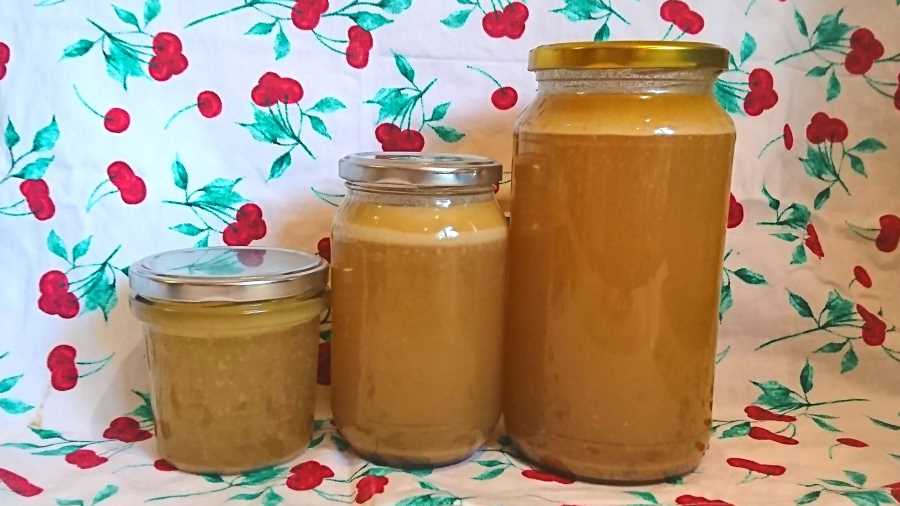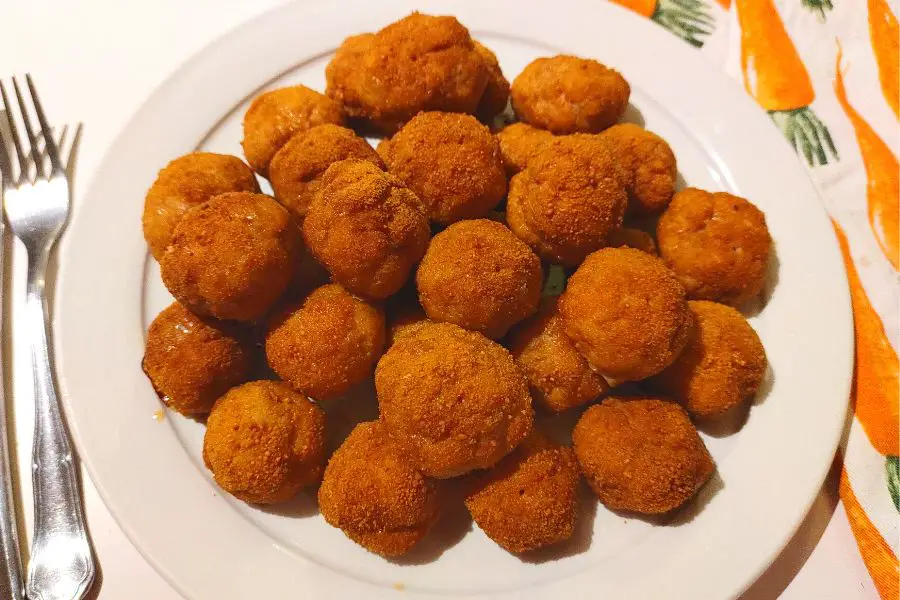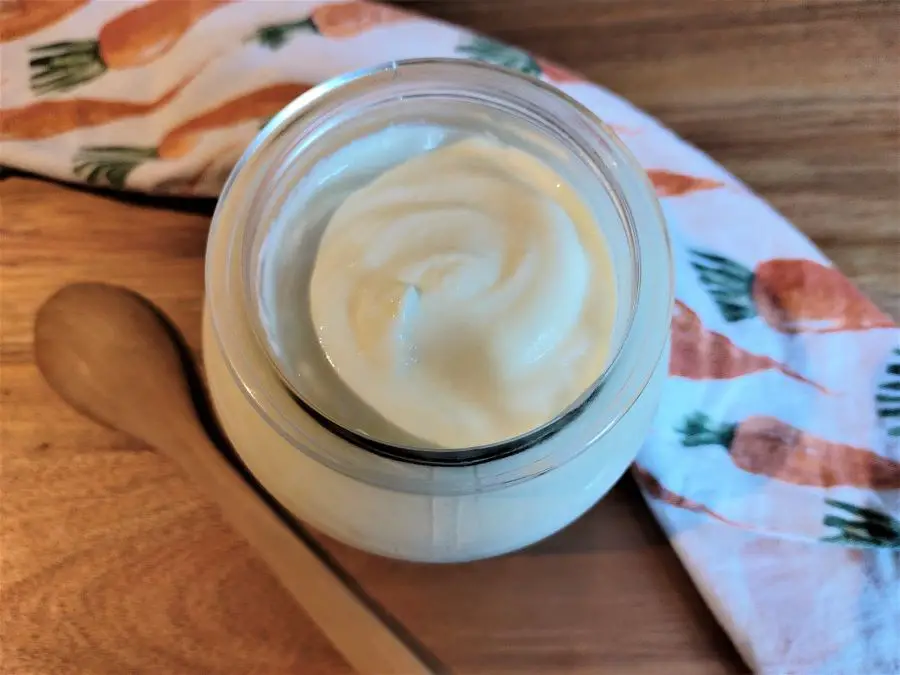This homemade chicken broth recipe was shared with us by one of our lovely readers, Kimberly Hower from the U.S.
Kimberly was on the keto diet in 2017, lost 65 pounds, and went from size 20 to size 14 in just 8 months.
However, her weight loss eventually stalled despite being very physically active and she was still around 50 pounds from her weight goal.
With Covid, moving, lockdown, and being unable to get access to healthy food, Kimberly found herself suffering from weight loss rebound.
She is currently researching and trying out the carnivore diet and we wish her every success on her health journey.
If you raise your own chickens and eat chicken regularly, definitely check out the recipe below.
Homemade chicken broth from pasture-raised chickens is delicious and super nourishing and it’s also a great way to utilize every bit of the animal and reduce waste.
Ingredients
- 6 lb (~3 kg) of chicken bones, skin, feet, necks, wings, heads, or any leftover bits of the chickens
- 2 tsp sea salt (optional)
- 3-4 tbs vinegar
- 6 quarts cold water (~3 liters).
Notes
You will need a stock pot large enough to fit all the chicken bones and water (e.g. a spaghetti pot).
If you usually don’t salt your meat or salt very sparingly, you don’t need to add salt to the broth.
The general bone-to-broth ratio is 1:1 (1 pound of bone to 1 quart of broth or 1 kg of bones to 2 liters of broth). However, you can alter this ratio depending on whether you want a light broth or a very condensed broth.
If you don’t have a lot of room in your freezer, you can cut down the water to a third or a quarter and get a very thick broth that you can dilute to drink or use for cooking.
If you use very little water (a cup or two), what you will end up getting is not chicken broth but more like a chicken essence which has been found to aid in recovery from mental fatigue and improve exercise performance.
Chicken essence contains many amino acids (threonine, valine, methionine, isoleucine, leucine, phenylalanine, lysine, tryptophan, histidine, and arginine), many minerals and vitamins as well as bioactive compounds (anserine, carnosine, and taurine).
Perhaps thanks to these nutrients, chicken essence has been linked to many health benefits such as reducing stress, fatigue, and anxiety and improving metabolism, immune system, post-partum lactation, hyperglycemia, and hypertension, etc.
In many Asian countries, chicken essence is often given to the sick, the elderly, pregnant and nursing mothers, and school children before taking exams.
Kimberly says that this homemade chicken broth is her go-to whenever she feels a little unwell.
I don’t like to eat late and, if I’m a little hungry in the evening, I’ll have a small cup of broth instead of a meal, and that usually works well.
Instructions
Step 1
Collect enough chicken bones or get the chicken bones and odd bits (e.g wings, necks, feet, and heads) from the butchers.
Odd bits with skin on will increase the gelatin content of the broth and make it extra gelatinous.
Step 2
Crush the chicken bones and bits using a meat mallet (meat tenderizer), the back of a meat cleaver, or a mortar and pestle. If you don’t have those, a hammer shall do too.
Crushing the bones will help expose the bone marrow and dissolve it in the broth.
Bone marrow is a great source of many nutrients, including vitamin A, vitamin Bs, vitamin E, iron, and calcium.
If you use conventionally grown chickens, you may skip this step because conventional chicken bones are quite soft and will dissolve just by using a potato masher a couple of times during the cooking process.
If you use pasture-raised chickens, you should definitely crush the bones and any other chicken bits that you use.
Pasture-raised chicken bones are a lot tougher than conventional chickens because they take a lot longer to reach slaughter weight and they exercise a lot more.
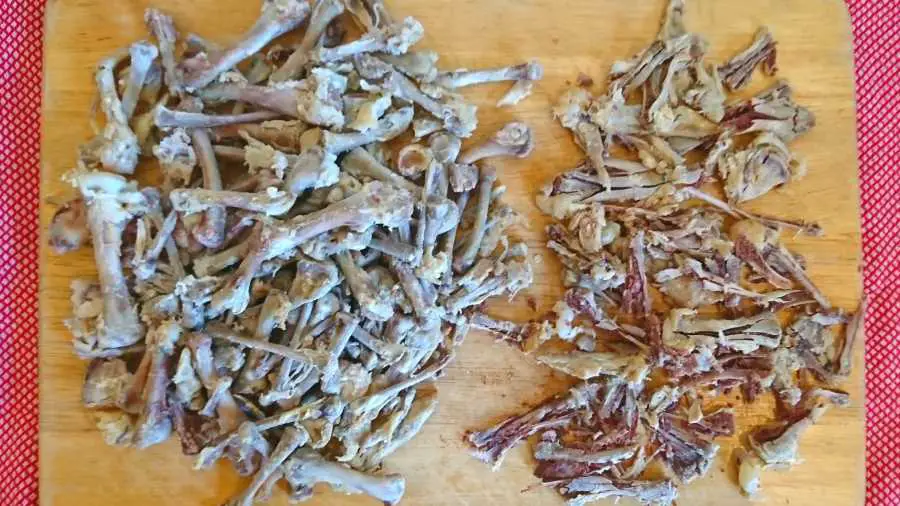
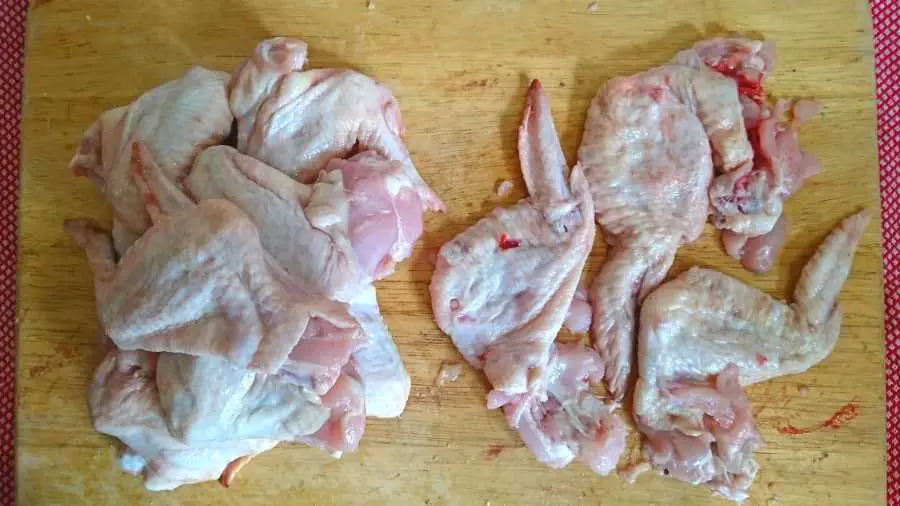
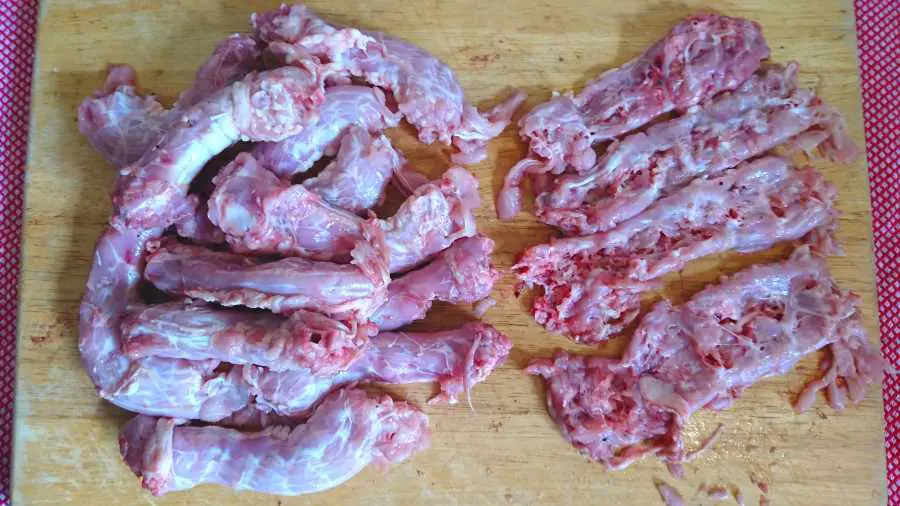
If you like a richer flavor, you can brown the chicken bones and meat before simmering. Just fry them for long enough till the outside turns golden and avoid burning them which will lead to the formation of a lot of harmful chemicals.

Step 3
Place vinegar, salt, chicken bones and bits, and water in a big pot and bring to a boil.
Reduce heat and let simmer for 24 to 36 hours. Generally, 24 hours if you use conventional chickens and 36 hours if you use pasture-raised chickens. You can get away with 12 hours but the longer you cook, the more nutrients you can get out of the bone in the broth.
After 6 hours of simmering, use a potato masher to crush the bones to help them dissolve easier. If you use pasture-raised chicken bones, mash the bones a couple of times, once after 12 hours and once at around 24 hours.
A good indication that you’ve cooked the bones for long enough is when you find there is just unidentifiable sludge left in the base of the pot (see image below).
If you like a clear broth, skim the foam off every 15 minutes or so during the first hours of simmering.
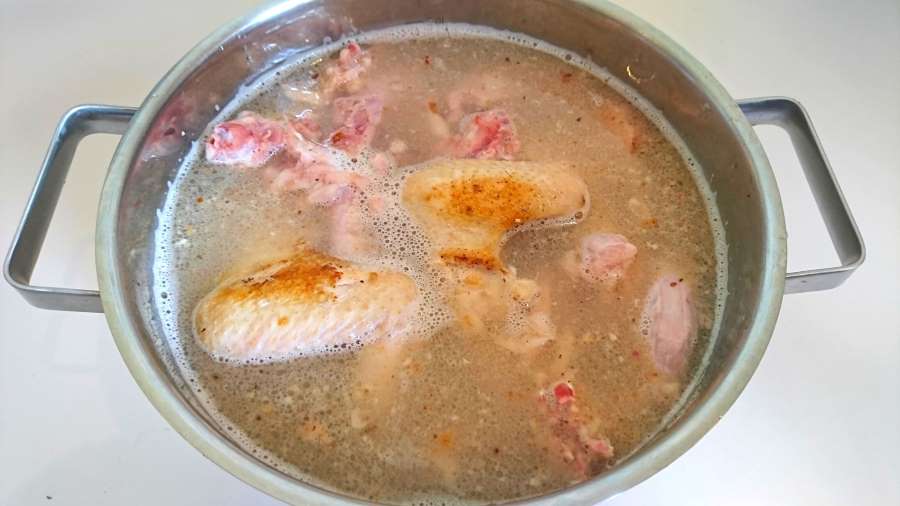
Step 4
Use a slotted spoon to remove as much bones and meat bits as you can.
Let the broth cool before filtering out the remaining bits using a metal strainer.
If you like to get a clearer broth, use both a metal strainer and cheesecloth to strain the bones and meat fragments.
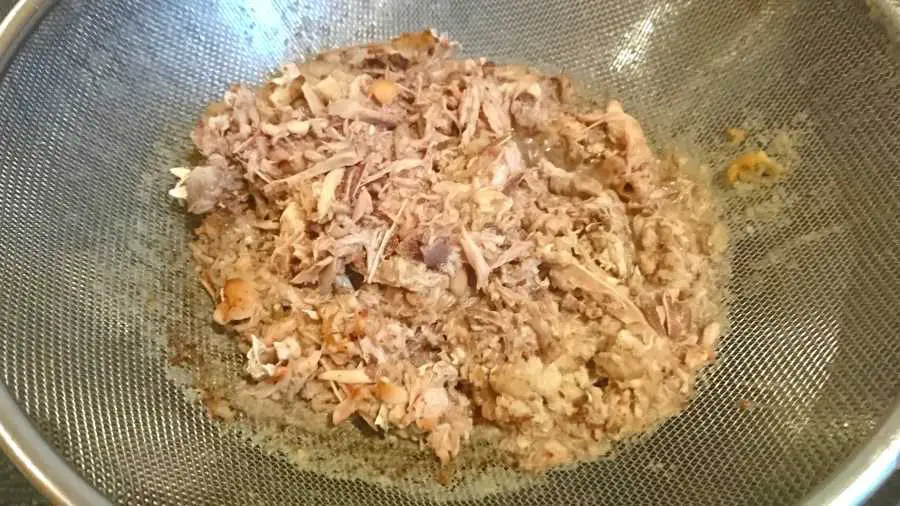
Store the broth in clean mason jars and, without tightening the lids, keep the jars in the refrigerator to cool. You then can move them to the freezer to store for later use.
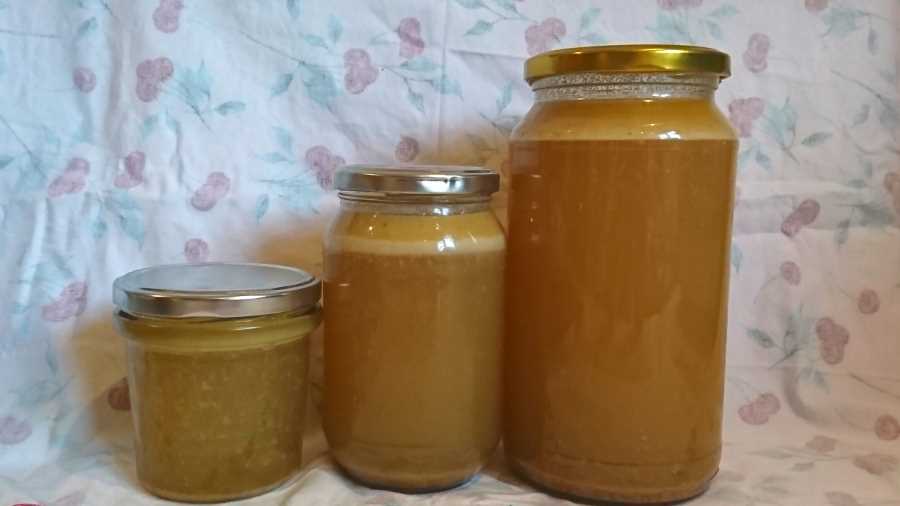
If you don’t like to eat the chicken fat, after refrigerating the broth overnight, you can lift out the solid fat on top of the broth jar.
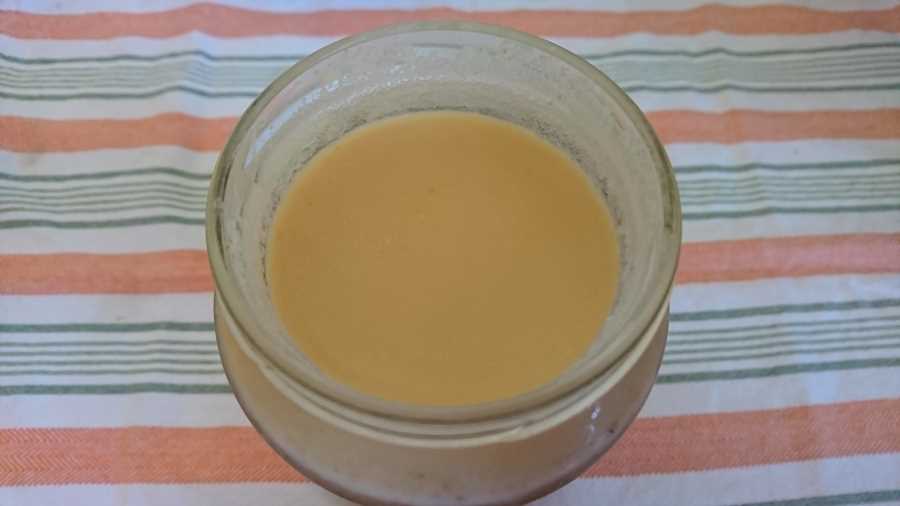
What you have left is a lovely thick, gelatinous, and nutritious chicken broth that you can eat cold or warm.
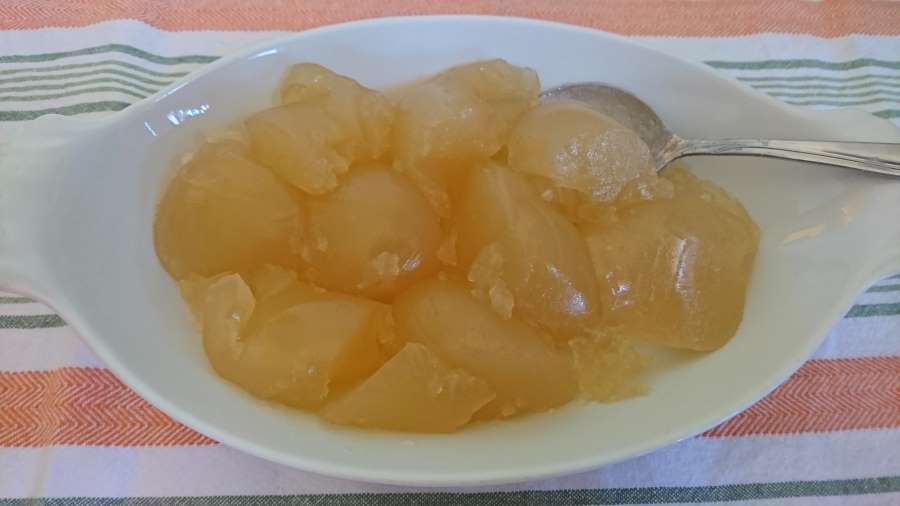
With regard to the leftover bones and meat, you can still eat them but they are void of flavor.
However, you can use a mincer chopper to turn them into a kind of ground bonemeal and then store it in ice cube trays for later use. Add it to ground beef, stew, and meat patties to increase your calcium intake.
But, generally, I wouldn’t bother with this unless the bones are from genuine pasture-raised chickens or you are on a very tight budget.
If you don’t want to eat the leftover bones, give them to your pets or leave them in the corner of your garden for the wildlife.
Other recipes that you may be interested in:
Carnivore Sticky Lamb Ribs Recipe
Carnivore-ish Slow Roasted Lamb Shank Recipe
What Are the Best Ways to Cook Meat on the Carnivore Diet?
Disclaimer: The information in this post is for reference purposes only and is not intended to constitute or replace professional medical advice. Please consult a qualified medical professional before making any changes to your diet or lifestyle. Please check out our disclaimer for more detail.

